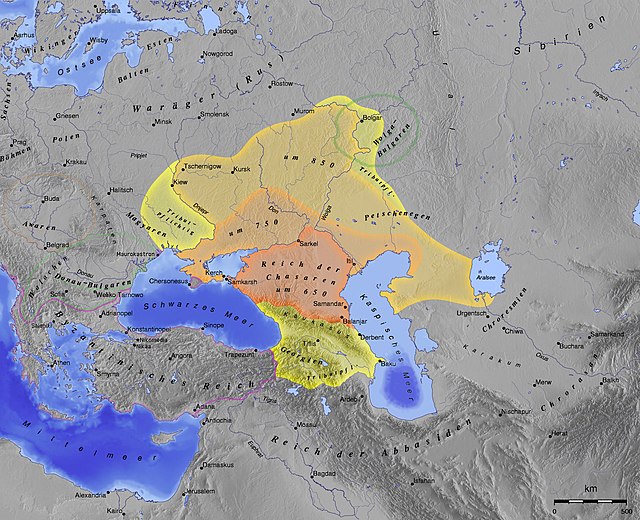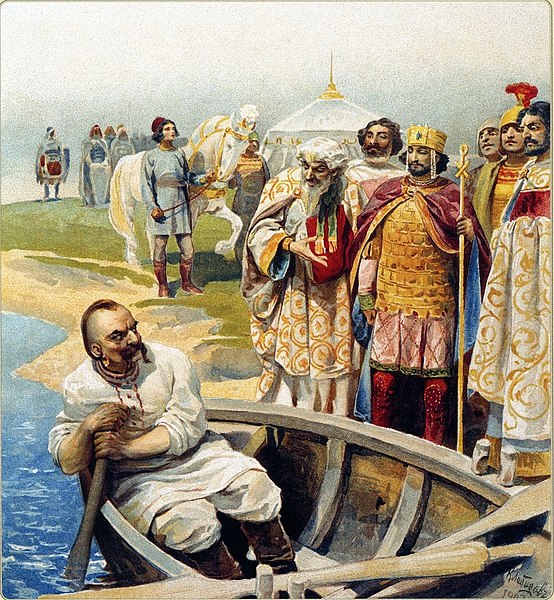Leo IV the Khazar was Byzantine emperor from 775 to 780 AD. He was born to Emperor Constantine V and Empress Tzitzak in 750. He was elevated to co-emperor in the next year, in 751, and married to Irene of Athens in 768. When Constantine V died in September 775, while campaigning against the Bulgarians, Leo IV became senior emperor. In 778 Leo raided Abbasid Syria, decisively defeating the Abbasid army outside of Germanicia. Leo died on 8 September 780, of tuberculosis. He was succeeded by his underage son Constantine VI, with Irene serving as regent.
Solidus of Leo IV and his son Constantine VI
The Khazars were a nomadic Turkic people that, in the late 6th-century CE, established a major commercial empire covering the southeastern section of modern European Russia, southern Ukraine, Crimea, and Kazakhstan. They created what for its duration was the most powerful polity to emerge from the break-up of the Western Turkic Khaganate. Astride a major artery of commerce between Eastern Europe and Southwestern Asia, Khazaria became one of the foremost trading empires of the early medieval world, commanding the western marches of the Silk Road and playing a key commercial role as a crossroad between China, the Middle East and Kievan Rus'. For some three centuries the Khazars dominated the vast area extending from the Volga-Don steppes to the eastern Crimea and the northern Caucasus.
Khazar Khaganate, 650–850
Site of the Khazar fortress at Sarkel (aerial photo from excavations conducted by Mikhail Artamonov in the 1950s).
Sviatoslav I of Kiev (in boat), destroyer of the Khazar Khaganate.
Seal discovered in excavations at Khazar sites. However, rather than having been made by Jews, these appear to be shamanistic sun discs.





